Submitted by WA Contents
Emre Arolat Architecture highlights complex layers of the Antakya Museum Hotel with archstrataantioch
Italy Architecture News - Jun 13, 2016 - 15:14 11514 views
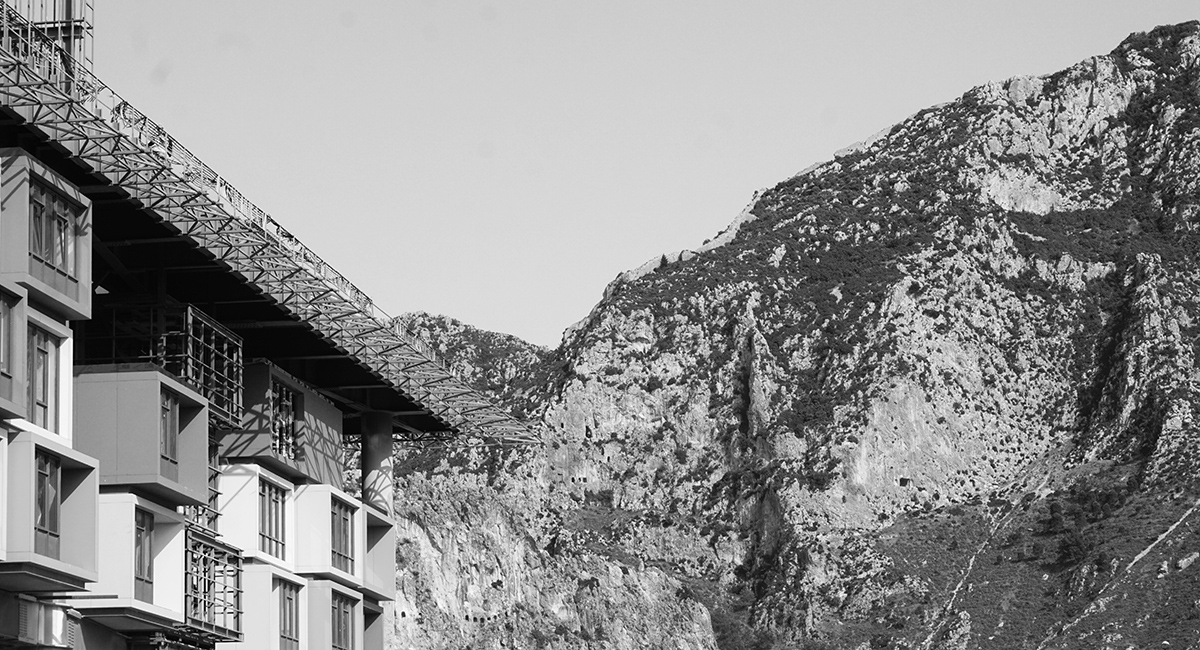
As part of the 15th International Architecture Exhibition of Venice Biennale, the Collateral Event 'Time Space Existence' at Palazzo Bembo, Palazzo Mora and Palazzo Rossini presents architects from 6 continents, brought together in an extraordinary combination. Emre Arolat Architecture (EAA) is among the other distinguished architecture studios presenting in Time Space Existence exhibition with 'archstrataantioch', highlighting the complex layers and the unique manner of the Antakya Museum Hotel project where intricate circumstances regarding the site along with normatives are confronted and dealt with in an unprecedented way, displaying how architecture can cause paradigm shift in interpreting private and public.
The exhibition shows a large diversity of projects (models, concepts, research results, dreams, hopes and ideas), combining classical architectural presentations with surprising artistic elements. In addition the exhibition presents for the first time an extraordinary combination of architecture photos, a wide range of individual approaches that make a sincere strong statement. Each location has a particular atmosphere.
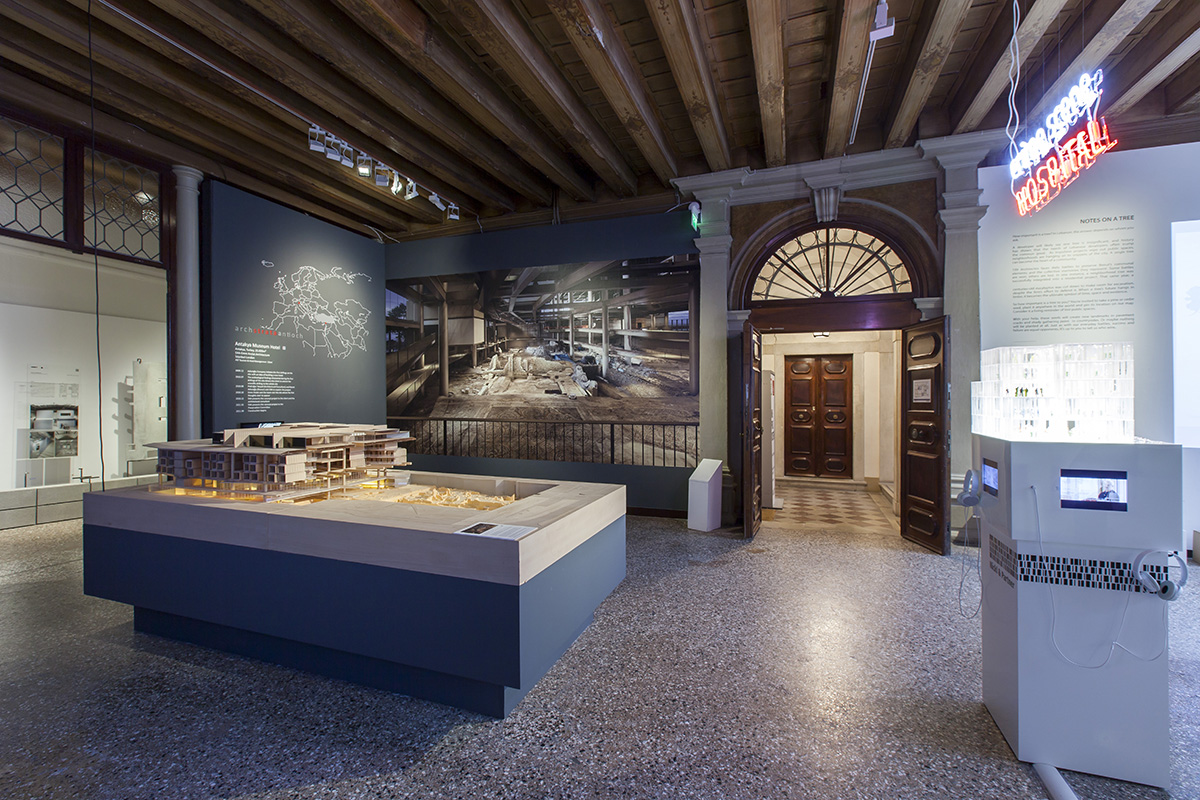
Image © Patricia Parinejad
The rooms in Palazzo Bembo mainly highlight solopresentations by architects such as Peter Eisenman, Curt Fentress, Woha, Studio Razavi or research projects such as the University of Arkansas. With its typical Venetian features, Palazzo Mora shows a variety of architects within its grand spaces, such as the work of Denise Scott Brown, the University of Sydney, Auckland and MIT. In Palazzo Rossini there is a large presentation from the work of GMP Architekten and the AAC Academy.
By combining different architectural thoughts and approaches, this exhibition aims to enlarge our human awareness of our own personal existence as a human being within a specific space and time.
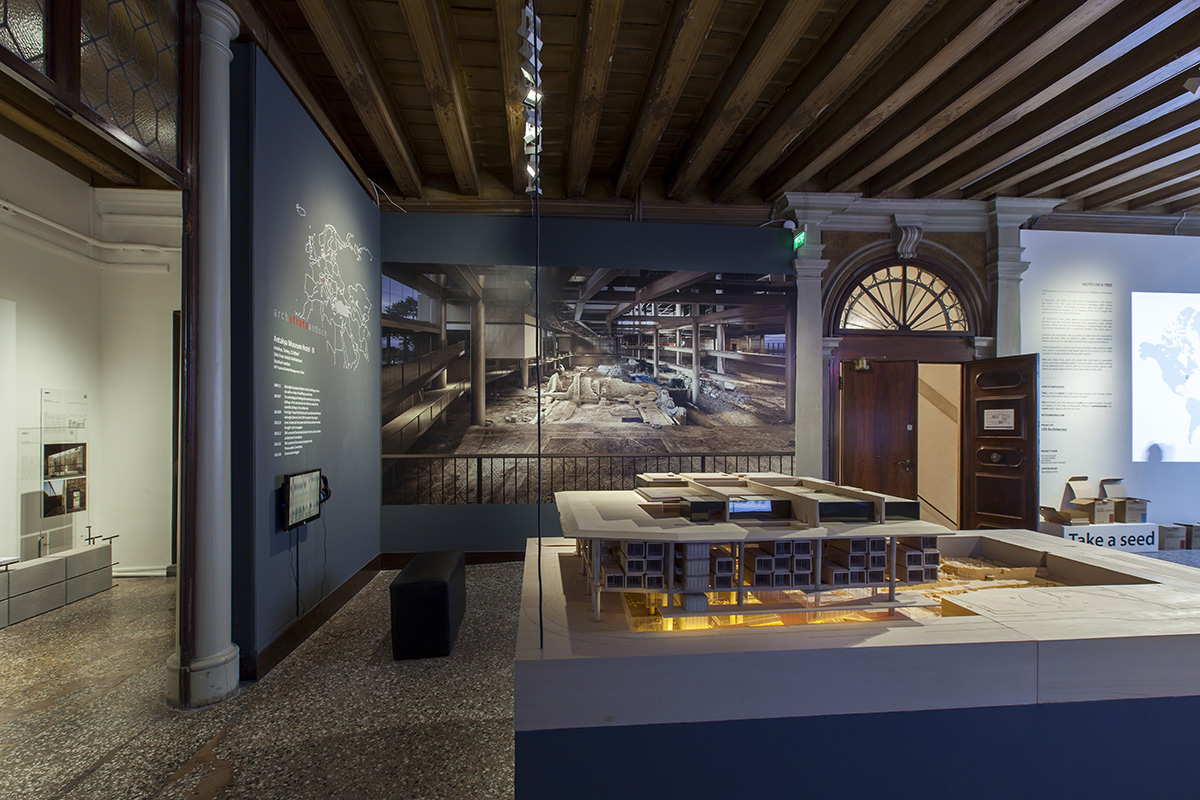
Image © Patricia Parinejad
'archstrataantioch' showcases the Antakya Museum Hotel project located in the center of Antakya, Turkey, close to St. Pierre Church which is one of the most important pilgrimage sites of Christianity.
In Antakya, in a geography where every dig reveals findings of archeological relevance; contradictory to the common practice of concealing the findings and pursuing on with the construction, the client chose to unveil the potential of the site while bringing EAA into the project with the expectation of Emre Arolat Architecture to take the initiative of envisioning a building where a museum and a hotel could coexist together. The process of dealing with the tension and the attractive potentials of this programmatic dichotomy, examined throughly by EAA, is presented in archstrataantioch.
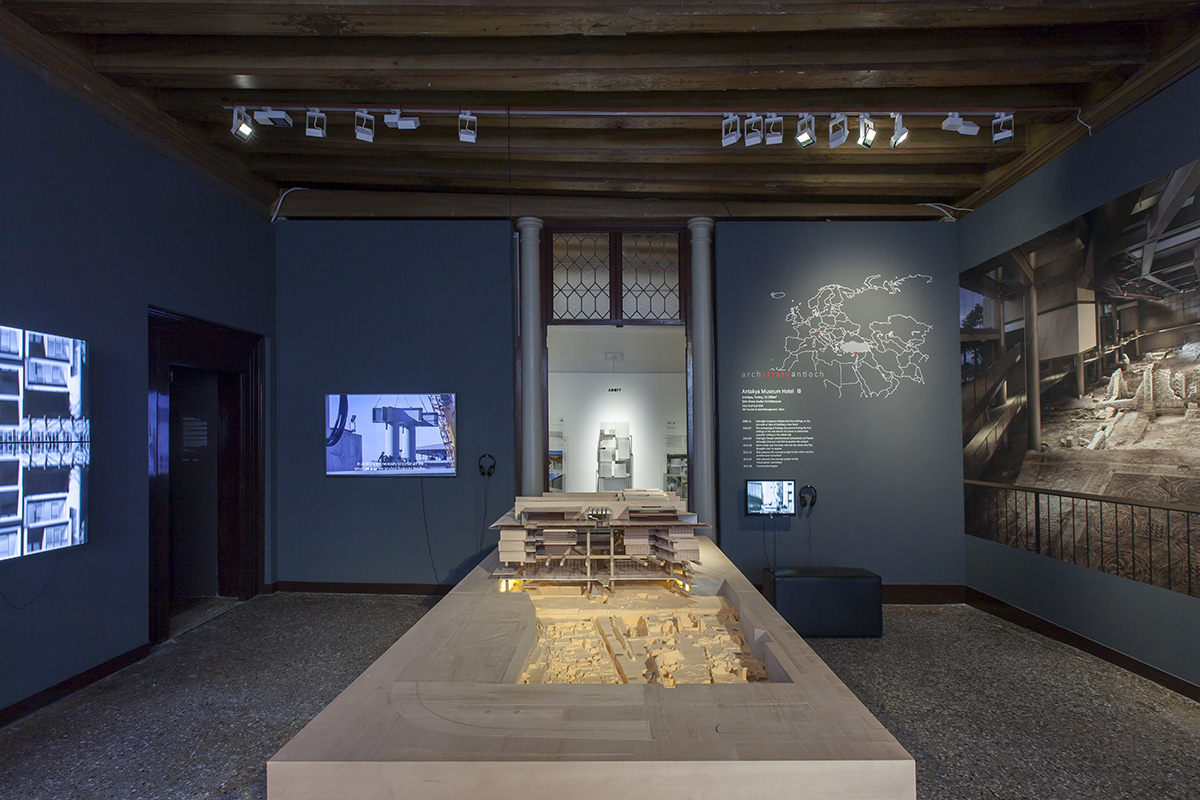
Image © Patricia Parinejad
Through images, text, videos and model, the exhibit reveals multi-layers and the unique manner of the Antakya Museum Hotel project. Regarding the project, Emre Arolat Architecture, located in Istanbul and London, considers it important that at the beginning of each project there are deliberations at length on notions of region, area, local patterns, cultural and physical resources. A multilayered effort at reading, researching and understanding is undertaken to reveal the collective and psychological features of the project and Antakya Museum Hotel project is a unique example of this approach.
The site of the project is located in the center of Antakya, close to St. Pierre Church, one of the most important pilgrimage sites of Christianity. In Antakya, in a geography where every dig reveals findings of archeological relevance; contradictory to the common practice of concealing the findings and pursuing on with the construction, the client chose to unveil the potential of the site while bringing EAA into the project with the expectation of EAA to take the initiative of envisioning a building where a museum and a hotel could coexist together.
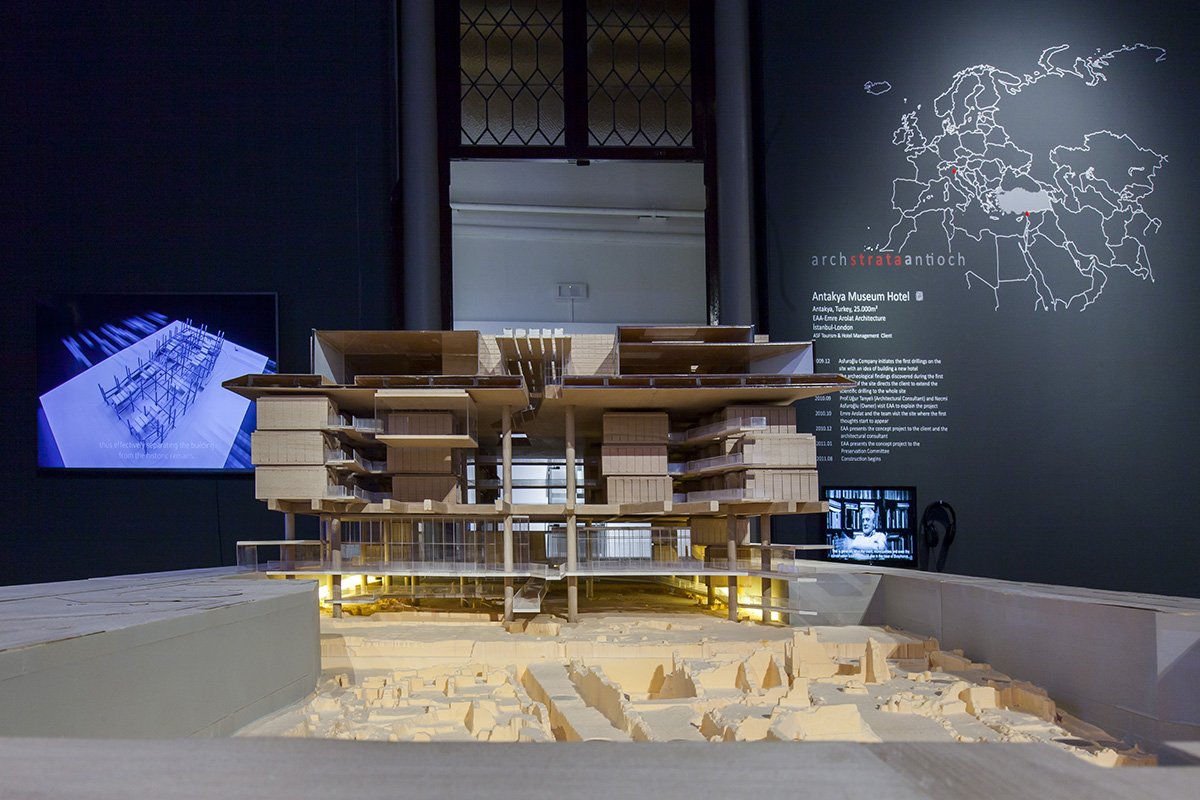
Image © Patricia Parinejad
The process of dealing with the tension and the attractive potentials of this programmatic dichotomy was a real challenge. The hotel typology, in general, proposes a base where the public spaces are planned on the ground floor and rooms are stacked on the upper floors suggesting a monolithic and introverted building. And it proposes a life that is inevitably artificial and fictional. While promising ease and comfort, but never delivering them adequately enough compared to 'home', hotels substitute this shortfall by providing an image of 'comfort' and an 'extraordinary experience'.
''On the other hand it was crucial for the museum to refrain from exhibiting archeological findings as cheap objects, protecting them from becoming an accessory of a touristic extravaganza and finally it was necessary to provide a certain amount of permeability for the public use'' says the designers of EAA.
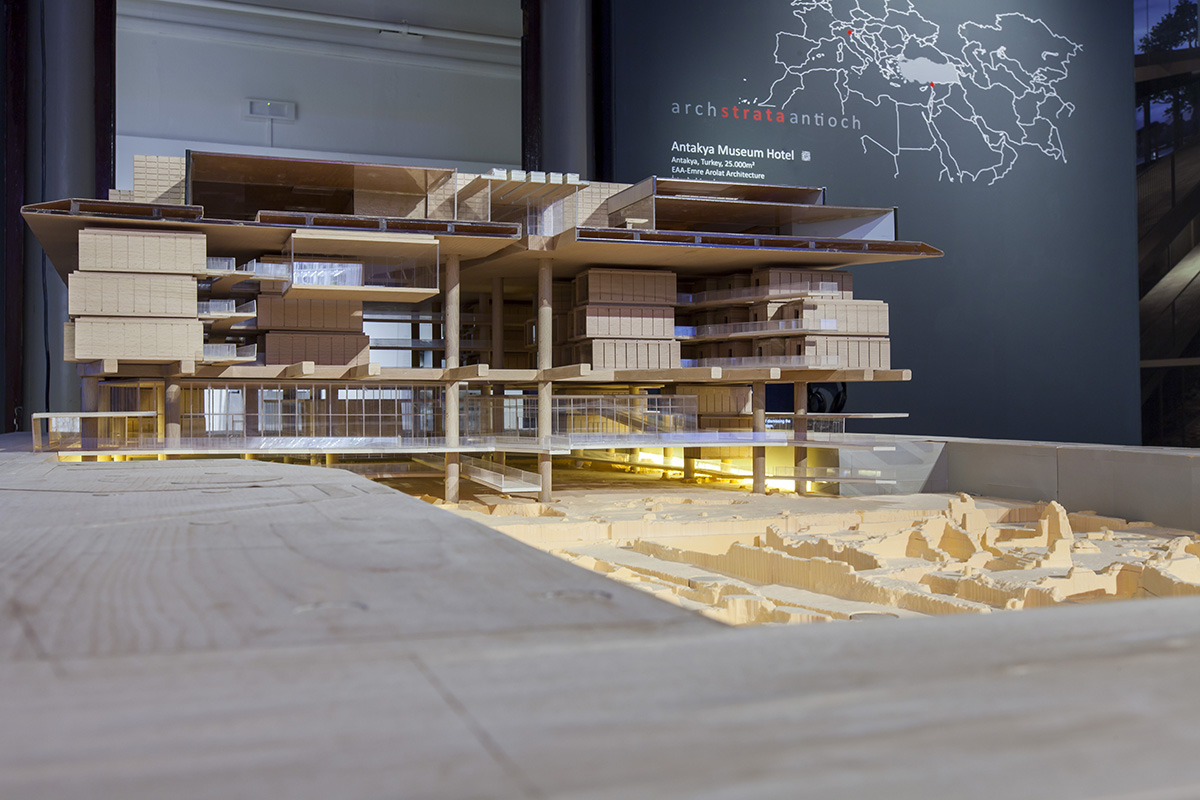
Image © Patricia Parinejad
EAA defines the problem as follows: ''The tension between these two main – hard to be together- components of design programmes had to be examined throughly and the results had to be confronted with grit. Exactly in this context, we can talk of the tension that distinguishes the hotel from a typical hotel and in return causes the museum to differentiate from the familiar notions of a museum, as the principal element of the project.''
The results of this tension had impacts on the architectural expression as well as the construction process. First of all the mass of the hotel needed to be fragmented and the functional diagrams had to be turned upside down to be reconstructed. The most significant result that made the circulation system and functioning of the hotel complicated was relocating the ground floor public spaces up to the roof.
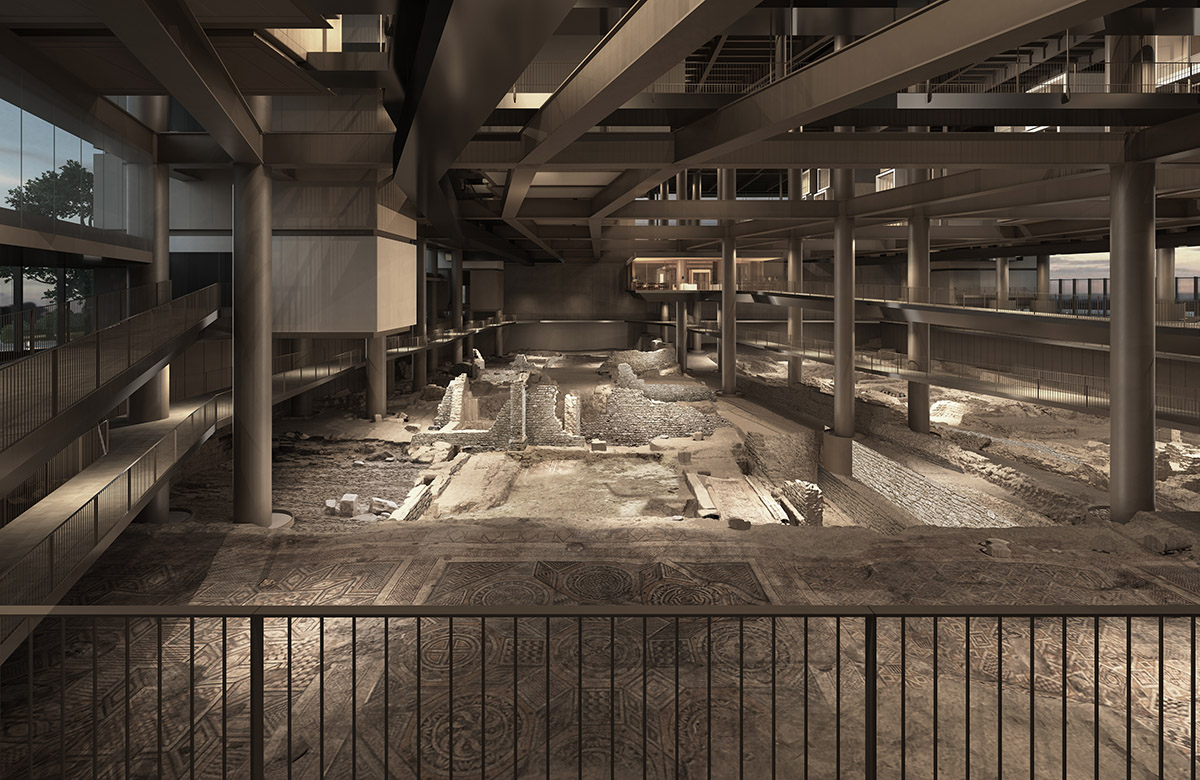
Image © EAA
Hence, the ground floor freed from public facilities provided a continous relationship between the hotel and museum’s masses, and the roof was transformed to house the hotel’s public functions in addition to its role as a canopy for the archeological site. In this scheme, the stacks of rooms are fragmented forming a porous texture where each module expresses itself. The corridors, aimed to be kept as short as possible in conventional hotels, are practically turned into paths for short trips. The lobby and the lounge as ground floor functions are seperated and treated as floating boxes in the building’s volume.
Beneath all these layers is the museum, on the level closest to the ruins. The museum consists of an info building and a path system enabling visitors to experience the archeological site. All the interpretations of the programme is composed of horizontal layers developed above the site relatively consisting of self reliant floors. The inevitable result of the fragmentation of the hotel mass prevents the building to have an envelope.
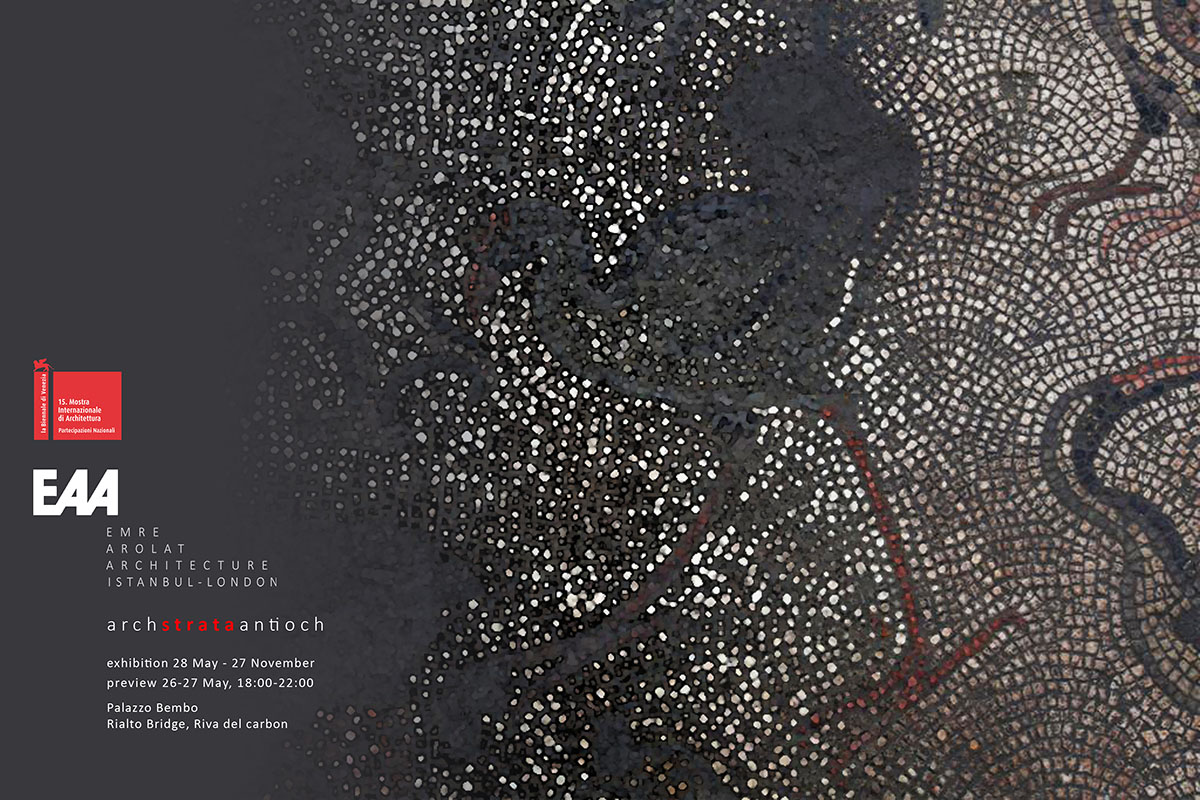
Image © EAA
''In this respect, the conceptual framework of the hotel is completely contrary to the theme hotels trending everywhere nowadays. We come across with “envelope”s cladded on top of classical hotel buildings assuming to be on par with the mass tourism consumer demands. It has to be emphasized that Antakya Museum Hotel does not have an evelope as such. On the contrary, it may be regarded as a giant carcass enabling its sub divisions to form various configurations with all its joints being exposed'' adds the architects of EAA.
EAA's Antakya Museum Hotel can be understood in its unique manner where intricate circumstances regarding the site along with design normatives are confronted and dealt with an unprecedented way, once more displaying how architecture can cause a paradigm shift in interpreting private and public.
The Collateral Event 'Time Space Existence' at the 15th International Architecture Exhibition in Venice Biennale, is promoted by the Dutch nonprofit Global Art Affairs Foundation and the exhibition will be on view in Palazzo Bembo from 28 May until 27 November 2016.
Project Facts
Curators: Gonca Paşolar, Emre Arolat
Consultants: Sevim Aslan, Ass.Prof. Gülsün Tanyeli, Prof.Uğur Tanyeli
Exhibition design: Özge Ertoptamış, Ege Yüksek
Team: İdil Akay, İsmet Arga, Ceren Bilgin, Aydın Çınar, Murat Emer, Meltem İnce Okvuran, Kadir Karaset, Anas Mahli, Akın Şahin, Metin Tuncel, Zeynep Uşşaklı
Texts: Şerif Süveydan, Meltem İnce Okvuran
Photos: EAA Archives
For their valuable contributions special thanks to: Şaziment Arolat, Can Okkalı, Can Tanyeli, GAA Foundation, ASF Tourism & Hotel Management
Top image © EAA
> via Global Art Affairs Foundation / EAA